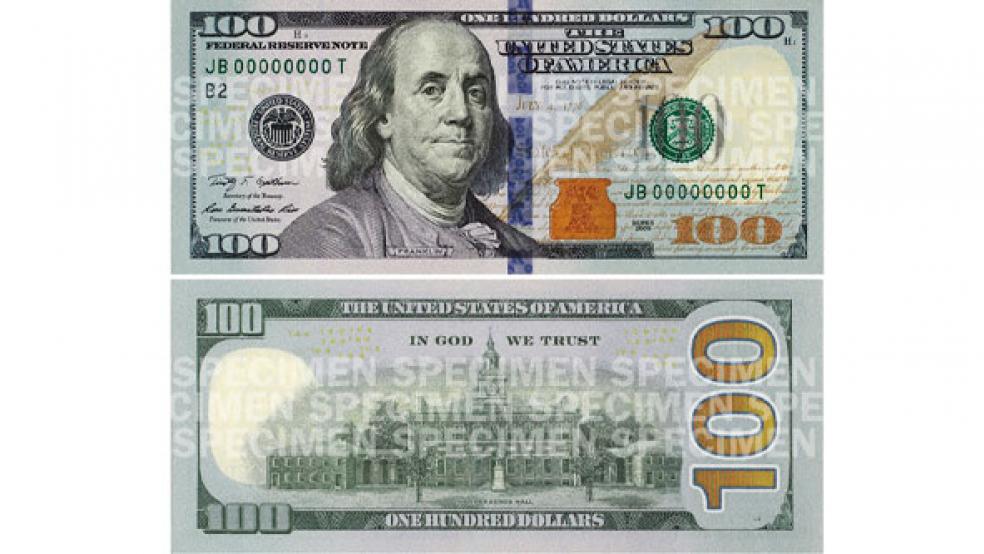Come October, when you go to the ATM each morning to take out your daily stack of $100 bills (and really, who doesn't do this?), don't be alarmed if you don't recognize the crazy pieces of paper that come flying out.
Those will be the Fed's new $100 bills — a project Uncle Sam has been chipping away at since 2003. The new Benjamins were originally scheduled for circulation starting in February 2011, but the agency was forced to postpone due to problems including "unwanted creases" reports the Los Angeles Times.
Well, it was worth the wait. The new currency is loaded with high-tech features that will make it "easier for the public to authenticate, but more difficult for counterfeiters to replicate," says the Fed. And though the bill costs slightly more to produce than our current $100 note, it should save money in the long run — $100s are more frequently counterfeited than any other U.S. currency outside the United States. North Korea in particular is known for producing incredibly high-quality counterfeit $100s known as "supernotes," which are almost impossible to detect as fakes. This new bill should make "supernotes" extremely difficult to produce.
And don't worry about turning in the stack of old $100s under your bed. The billions of notes already in circulation will remain legal, but starting October 8, they will be destroyed and replaced when they pass through the Fed. In the interest of preventing confusion at the cash machine, here's a quick look at the new $100:
New security features include:
1. A blue, three-dimensional security ribbon that's woven — not printed — into the note's fabric.
2. Another security strip to the left of Ben's face. It's only visible when held up to the light.
3. A faint image of Ben's face in the black space on the right, which can be seen on both sides of the bill.
4. Alternating images of bells and the number 100 that change as the viewing angle is tilted.
5. A liberty bell inside an ink well that changes from copper to green when tilted.
6. A large "100" on the front that also changes color when tilted.
7. An even larger "100" vertically positioned on the back to help those with visual impairments identify the currency.
8. Raised "intaglio" printing throughout the bill to give the note its "distinctive texture."
9. Microprinting reading "The United States of America" on Ben's collar, "USA 100" on the watermark, and "ONE HUNDRED USA" along the golden quill.
Check out NewMoney.Gov for more info.
This article by Carmel Lobello originally appeared at TheWeek.com. More from TheWeek.com:
Fisker: The Solyndra of electric cars?
How the rich came out winners from the Great Recession
How Boeing's profits soared despite its grounded Dreamliner


